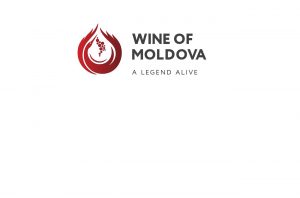In partnership with Wines of Moldova
Today, the wines being made across Moldova’s wine regions – including its three PGIs – showcase its diverse terroirs, mesoclimates and grape varieties. They also reflect the expertise, craftsmanship and technical resources developed by producers in recent decades.
Regional diversity
The large Codru PGI region, at the heart of the country, has vineyards covering 61,200 hectares, and is famous for its white wines, which tend to be pleasantly rich and aromatic, and for its characterful sparkling wines. White varieties cover 63% of the PGI production area, with Fetească Albă, Viorica, Sauvignon Blanc, Chardonnay, Riesling, Pinot Gris and Aligoté as the most planted white grapes.
The area is marked by a diversity of valleys, basins and many small rivers, while forests of oak and linden trees cover a quarter of the region, shaping and moderating the local continental climate. The region’s soils are predominantly of rich chernozem, a distinctly black-coloured substrate with good water retention capacity, that nurtures the region’s sprawling woods. Codru is also home to the famous underground cellars of Cricova and Mileștii Mici, near the capital, Chişinău.
The south-western region of Valul lui Traian PGI has 43,200 hectares of vineyards. The continental climate is moderated by the nearby Black Sea and sheltered by the Tigheci forests, with an overall cooling effect. Well-aerated chernozem soils predominate but the region also has significant areas of clay-rich loams. Key sub-regions are the Bugeac Plain, the Tigheci Forests and the Prut River Terraces in the far west, facing Romania across the river Prut.

Famed for its red wines, Valul lui Traian is named after its location between two earthworks believed to date from the 3rd–4th centuries CE, known as ‘Trajan’s Walls.’ Cabernet Sauvignon, Merlot, Saperavi, Fetească Neagră are the main red grapes – which cover 60% of the region’s vineyard area – and provide the raw material for velvety, fruit-driven reds and lifted rosés. Sauvignon Blanc and Chardonnay are the predominant white varieties, and the region produces fine, refreshing whites with a complex and elegant aromatic profile.
Ștefan Vodă PGI, in the south-east of the country, is relatively low-altitude, covering the terraces of the Nistru (Dneister/Dnister) river as it nears the sea. The soils are a combination of dark chernozem and well-drained sandy soil over limestone bedrock, while the climate is moderate continental, significantly influenced by the cooling winds blowing from the Black Sea.
10,000 hectares of vineyards, where Cabernet Sauvignon, Merlot, Chardonnay, Pinot Gris, Fetească Albă, Pinot Noir, Fetească Neagră and Rară Neagră are the dominant varieties, deliver some of Moldova’s most highly-regarded wines, known for their balance, complexity and age-worthiness. The reds, both single-varietal and blends, have long been the region’s flagship product, particularly those hailing from the Purcari sub-region, with its distinct mineral-rich soils.
Moldova’s other PGI, Divin, regulates the production of distilled grape spirits, and covers the entire country. The PGI requires these brandies to be double-distilled and aged in contact with oak for at least three years. Among leading distilleries are Barza Albă in the north part of the country, Calarasi Divin, in Codru and the historic Kvint, in Tiraspol.

A rich palette of varieties
Over 30 grape varieties are currently planted across Moldova. Indigenous varieties – which are significant for both red and white wine production – account for 10% of the total area under vine; the percentage is likely to increase with growing interest from producers and consumers alike.
Key red grapes include Fetească Neagră, a very old local variety capable of producing deep, serious reds, and the more easy-going Rară Neagră. International varieties – namely Cabernet Sauvignon, Merlot, Pinot Noir and Malbec – are also widely planted. In addition, Saperavi here yields wines of a very different character to those of its Georgian homeland, and forms part of the internationally renowned Negru de Purcari blend.
For the whites, the best-known indigenous varieties include the two other Feteascăs: Fetească Albă, the most widely planted of any local variety at 651 ha, on which many PGI Codru blends are based, and Fetească Regală, which produces crisp, aromatic still whites. Alongside these historic grapes, two new resistant varieties have become important additions to Moldova’s grape portfolio: Alb de Onițcani and Viorica, developed at the National Institute of Winemaking and Viticulture of the Republic of Moldova in 1970 and 1969 respectively.
The latter, a crossing of Seibel 13-666 and Aleatico, is now grown across 720 ha and produces award-winning wines of great aromatic expressiveness and refreshing acidity. A range of international white grapes also thrive in Moldova, including Sauvignon Blanc, Chardonnay, Aligoté, Muscat, Muscat Ottonel, Pinot Gris, Pinot Blanc, Riesling, Rkatsiteli and Traminer.
Moldovan wine at a glance:
Four traditional wine regions, three of which are now PGIs:
– Codru PGI
– Valul lui Traian PGI
– Ștefan Vodă PGI
One PGI for spirits – Divin – for distilled spirits, covering the entire country.
Area under vine: over 128,000 ha – out of the country’s total area of 33,843km2, making it the country with the highest density of vineyards in the world.
Annual wine production: 1.4 million hectolitres in 2022; 1.3 million hectolitres in 2021, of which 80% are exported.
Climate: Continental, with moderating influences from the Black Sea and Caucasus.
Average temperature: 6.3°C in the North, 12.3°C in the South. Average summer temperature: around 20°C
Average annual rainfall: 450 – 550 mm
Leading indigenous varieties:
Red: Fetească Neagră (388 ha), Rară Neagră (190 ha)
White: Fetească Albă (747 ha), Fetească Regală (369 ha)









